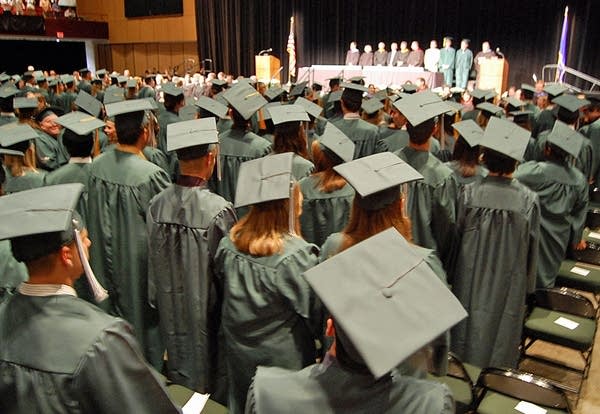MN high school grad rate tops 80 percent; students of color still lag
Go Deeper.
Create an account or log in to save stories.
Like this?
Thanks for liking this story! We have added it to a list of your favorite stories.

Minnesota students from all groups showed better high school graduation rates, the Education Department said Tuesday. Still, deep gaps remain between whites and black, Native American and Latino students.
Overall the high school graduation rate came in at about 81 percent last year with gains in every student group.
The data show continued growth in the number of students finishing high school, the Minnesota Department of Education said as it released the data.
"Over the past four years, we have doubled down on our efforts to better support students on their path from K-12 to career and college, and these data show it is working," Commissioner Brenda Cassellius said in a statement. "While today's data show Minnesota is moving in the right direction, there is more work to do."
Turn Up Your Support
MPR News helps you turn down the noise and build shared understanding. Turn up your support for this public resource and keep trusted journalism accessible to all.
In a conference call with reporters, Cassellius said because of increases in on-time graduation rates in recent years, disparities have begun to narrow between students of color and white students.
The head of the statewide teachers union congratulated students, teachers and policymakers for the role they played in pushing graduation rates upward.
Denise Specht, the president of Education Minnesota, said it's progress that's closing the achievement gap.
"There's still much more to do, but we're slowly closing gaps by race and poverty and for English learners," Specht said. "The trends are good."
While the data show improvements, wide gaps remained between student groups. Among the results, here are the 2014 graduation rates by group:
• White students, 86 percent
• Asian-American students, 82 percent
• Black students, 60 percent
• Native American students, 51 percent
• Students learning English, 64 percent
• Students from low-income families, 66 percent
• Latino students, 63 percent
The four-year rate for Native American students increased slightly, just over one percent from 2013.
On-time graduation rates for Minnesota Native American students have ranked at the bottom when compared to other states in recent years.
In fact federal data show Minnesota has the worst or second-worst graduation rates among reporting states in all four non-white student categories. No other state is in the bottom five in all four groups, and only Oregon comes close with three races in the bottom five.
One approach to fixing low graduation rates, according to Daniel Sellers at the education reform group MinnCan, is to make school more culturally relevant for students of color.
To do that Sellers thinks the state should concentrate on hiring a more diverse teacher workforce.
Students of color make up 28 percent of the state's enrollment, but only four percent of the state's teachers are non-white.
"It's critical when you understand that as the student population gets more and more diverse, seeing somebody that reflects them at the head of the classroom is one important way to meet the needs of students," Sellers said.
The key to fixing the graduation gap lies in finding programs within districts that are having success and replicating them across the state.
"This isn't all bad news, in fact there's some real good news in this," said former Minneapolis mayor R.T. Rybak, executive director of Generation Next, a group focusing on the achievement gap. "The challenge we have is to try and take these bright spots and bring them to as many schools as possible and quickly."
Meanwhile state education officials credit the slow and steady overall rise in graduation rates to tougher math and reading requirements put in place for students in recent years. They added that the 2014 data moves Minnesota closer to a statewide goal of having a 90 percent graduation rate by 2020.
Editor's note (10:40 a.m.): This story has been updated to include additional graduation rate data.


